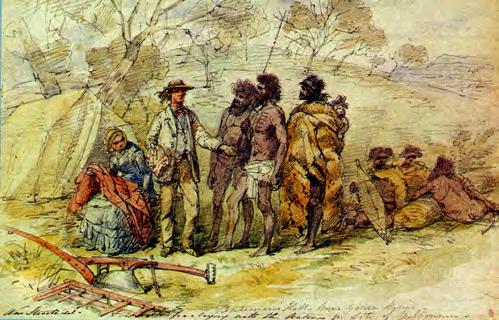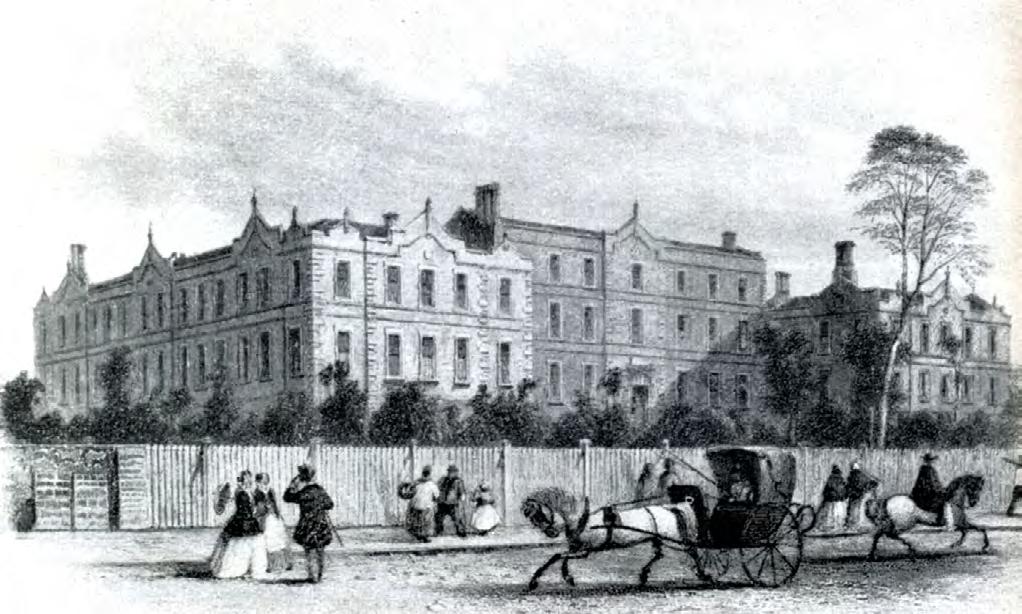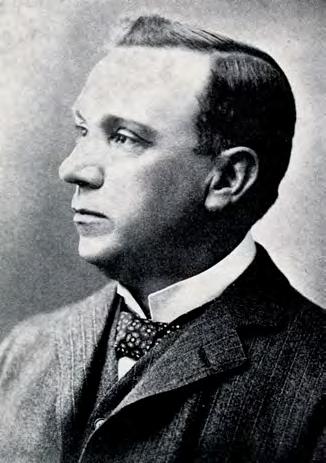
10 minute read
Advocacy at RACS Victoria, a remarkable century: 1835-1935 56
Advocacy at RACS
RACS has a strong history of advocacy across Australia and Aotearoa New Zealand. We regularly advocate for these positions across several different mediums—the media, public campaigns, or by negotiating directly, or providing written submissions to both government and non-government agencies. MBS Review Advisory Committee - Surgical Assistant Working Group Draft Report RACS has welcomed the opportunity to provide comment on the Surgical Assistant Working Group Draft Final Report. Our comments included:
Advertisement
• Surgeons are best placed to determine who can surgically assist with reference on the complexity of the procedure, the assistant’s level of competence and available local workforce.
• RACS recommends that non-medical surgical assistants, with the appropriate training and experience, can be used in settings where there is a limited pool of medically trained surgical assistants, especially in the rural, regional and remote settings. Non-medical surgical assistants are registered nurses, perioperative nurse surgical assistants and nurse practitioners, who have appropriate training and experience in surgical assisting. • Expanding MBS eligibility to non-medical surgical assistants, with appropriate training and experience is important to equity for rural patients and rural surgeons’ financial sustainability. • Current highly experienced, rural, non-medical surgical assistants can be recognised by a legacy clause as part of the MBS eligibility. Any formal Masters’ qualification should not be onerous for rural health services to support their nurses through. • RACS is best placed to define what constitutes adequate past experience and adequate training for a nurse surgical assistant. This should be determined before implementation of any MBS changes. • RACS can play a significant role in developing training, accreditation and credentialing of non-medical surgical
assistance education programs with funding from government. Medibank meeting RACS met with Medibank Private to discuss ongoing topical issues. It was noted that Private Healthcare Australia are calling for an urgent review of the process by which private hospitals are accredited and declared eligible to receive health fund benefits considering allegations in the media about inferior quality and safety in the cosmetic surgery sector. This would impact the health funds’ obligation to pay claims with a Medicare Benefits item number that occur in these facilities–regardless of the quality, safety and appropriateness of the services performed. Concurrently, Ahpra have proposed an ‘endorsement’ pathway for practitioners seeking to perform cosmetic procedures. Medibank Private continues to advance the proposal for a joint data project with RACS. They seek an initial in-principal support to sign a memorandum of understanding between RACS and Medibank to undertake a data discovery project to review Medibank data where RACS would provide clinical insights. Canberra meetings We met with the Department of Health (Health Resourcing, Medical Benefits DIV, MBD Private Health Industry Branch, and PSD National Health Reform Branch), Australian Private Hospitals Association, Consumer Health Forum, and Office of the Minister for International Development and the Pacific. We also met with the Office of the Federal Assistant Minister for Rural Health and engaged with several other relevant ministerial offices. These meetings were introductory and future meetings will be arranged where necessary. Environmental Sustainability in Surgical Practice Working Party (ESSPWP) The ESSPWP met on 12 September. The meeting was attended by RACS CEO John Biviano, RACS Project Manager Travis Dawe, and representatives from Lovell Chen, the architects behind the Melbourne office renovation project. The architects provided a presentation to the group which included sustainability elements that have been incorporated as part of the design. ESSPWP webinar, 15 September The Environmental Sustainability in Surgical Practice Working Party (ESSPWP) webinar featured a presentation delivered by Dr Chantelle Rizan, an ENT research fellow at University Hospitals Sussex NHS Foundation Trust. Listen to the recording here: tinyurl.com/4mnfveef Anti-Racism Working Party The RACS Anti-Racism Working Party will meet in November with the goal of completing a draft position paper, which highlights on what RACS should do in the advent of alleged racist conduct and consequent reforms and rehabilitation. We have also been consulting with our Building Respect, Improving Patient Safety Initiative team to help inform our approach. Letters to Medtronic and Johnson and Johnson
The Environmental Sustainability in Surgical Practice Working Party (ESSPWP) wrote to Medtronic and Johnson and Johnson (J&J) seeking information on the carbon footprint of their stapling products. The ESSPWP plans to follow Medtronic’s advice and write to the Medical Technology Association of Australia. The ESSPWP also received a response from J&J, who facilitated a meeting between their international subsidiary Ethicon and RACS to discuss shared areas of interest regarding sustainability. United Kingdom Health Alliance on Climate Change Dr Ken Loi and Dr Ben Dunne represented RACS on the United Kingdom Health Alliance on Climate Change (UKHACC) Green Surgery Oversight Committee. Representatives included several college groups across England and Scotland, the USA and Canada. The purpose of the larger steering group is to direct a smaller working group to produce an evidence-based guide to being more environmentally sustainable in surgery.
Victoria, a remarkable century:
1835 - 1935
The first Britons to discover Port Phillip were the crew of the Lady Nelson, commanded by John Murray, which entered the bay on 15 February 1802. Murray called the body of water, Port King, after the Governor of New South Wales, Philip Gidley King. On 4 September 1805, King himself formally renamed the bay, Port Phillip, in honour of his predecessor, Arthur Phillip. Port Phillip was then left mostly undisturbed until June 1835, when settlers from Van Diemen’s Land—from 1 January 1856 renamed as Tasmania— led by John Batman and John Pascoe Fawkner, established Melbourne on the lower reaches of the Yarra River. Melbourne is distinguished from the other Australian state capitals in that it was founded, unofficially, by individual enterprise. Once Batman, Fawkner, and others had established the settlement in 1835, the government in Sydney had to accept the fact. In 1836, Captain William Lonsdale, the first administrator of the Port Phillip District, arrived and in March 1837 the new settlement was given its present name, Melbourne, honouring the then British Prime Minister, William Lamb, Viscount Melbourne. By 1841, the population was more than 20,000. However, its first main surge in growth came in the early 1850s following the discovery of gold near Bendigo and Ballarat, less than 100 miles away. In three years, the population of Melbourne increased fourfold to 80,000. In 1839, there were six medical practitioners in Victoria: four in Melbourne, one in Geelong and one in Portland. By 1841, 18 physicians and surgeons lived in Melbourne; in 1865 there were nearly 400 of whom 64 were members of the Medical Society of Victoria. Of the medical graduates in the colony most received their training in the United Kingdom: not all were practising medicine. Many migrated to Victoria in the middle of the 19th century, some coming to look for gold, others seeking a cure for their tuberculosis. For the first five decades of European settlement in Australia, medical care for convicts and free settlers was provided by the salaried Colonial Medical Service. After the mid-19th century, as population and wealth grew, there was significant professional development based on private practice. With the rapid increase in population, the need for doctors could not be met by casual migration, and medical schools in Australia became a necessity. The University of Melbourne began teaching medical students in 1862, Sydney in 1863, and Adelaide in 1885. The importance of this initiative was confirmed in February 1927, when of the 41 founders of the College of Surgeons of Australasia, eight of the 10 Victorian signatories, were graduates of the Melbourne Medical School.

The Melbourne Hospital was established as a charitable institution and its foundation stone was laid on 20 March 1846, at the corner of Swanston and Lonsdale Streets. Even in its first years the hospital was not financed wholly by the voluntary gifts of charitable citizens; colonial governments gave it considerable financial aid. The earliest rules of the hospital said that contributors, in return for their donations, had the right to elect the men who held responsible office. A contributor of £2 each year became a governor, and a donor of £1 annually was called a subscriber. The first six honorary physicians and surgeons to the hospital were appointed without an election, as there were only six applicants. Doctors in Melbourne realised that practice in the crowded wards of the hospital would give them a richness of experience, which they could not hope to encounter in private practice and would help them become better practitioners. Appointment at the hospital was widely regarded as the best evidence of the doctor’s worth, and it helped greatly to build a lucrative private practice. Accordingly, the practice of soliciting votes became customary: in the press, in handbills, in clubs and by doorto-door canvassing. Candidates for honorary medical office tried to persuade subscribers to vote for them. The struggle for places at the hospital became even more intense later in the 19th century. Controversy led to the Medical Society of Victoria asserting that printed solicitations ‘should be as brief and devoid of puff as possible’. Sir Thomas Fitzgerald said of the system in 1900: ‘the mode of electing staff … most seriously embitters our relations with one another’. William Gillbee, after 22 years of service, when he was still a highly skilful surgeon, was defeated in the elections of 1875. Two of the most active Listerians, TM Girdlestone and JH Webb, were removed by subscribers in 1887 and 1891 respectively, when both were active and capable practitioners. Surgeon William Moore had been an opponent of the electoral system since the 1880s, when he first held office at the hospital. Finally, in 1910 he led a successful campaign for electoral reform, ensuring that the term of medical officers to inpatients be extended from four to at least 15 years. He also suggested that new members of the inpatient staff be chosen, in order of seniority, from the physicians and surgeons to outpatients—the choice was not to lie with subscribers. The only hospitals in Melbourne before 1900 were charitable ones, apart from a few highly expensive private nursing homes. In 1879, the fees charged by the profession were too high for a large proportion of the population. Private practitioners who accepted the recommendation of the Medical Society charged half a guinea for advice given during the day in their own rooms or within a mile of their residence. They charged an extra guinea for each mile travelled to a patient’s home. For consultation at the request of another doctor, two guineas; for setting a fracture: five to 20 guineas; for a major amputation or treatment of hernia: 25-50 guineas. William Moore’s life provides a glimpse into surgical practice of the time. Born in Milton, Brisbane in 1859, the son of a Baptist minister, he had an exemplary path through secondary school. He passed the Senior Public Examination of the University of Sydney before 1876, and then entered the Melbourne Medical School topping his final year in 1883. And just two years later qualified for the MD (Melb) and MS (Melb). He was immediately appointed to the Melbourne Hospital where he undertook his life’s work. His contributions to the Intercolonial Medical Journal of Australia were numerous, including reports on hydatid disease, popliteal aneurysm, and the performance of prostatectomy under spinal anaesthesia. He championed the introduction of Listerism, especially as it related to safe abdominal surgery. In 1899, some of his papers were collected and published in a small book entitled Plastic Surgery, a term not commonly used until after WWI. His dissections for malignant glands of the neck and for malignant breasts were described as ‘works of art’, beautifully undertaken. He was one of the few surgeons with his own hospital and Milton House, was a busy place. His fame was Australia-wide, and he treated many cases sent to him from Queensland and Western Australia; Professor Archibald Watson referred many cases from Adelaide. Moore was one of the Foundation Fellows of our College in February 1927 and one of three Victorians appointed to the first Credentials Committee—George Syme and Hamilton Russell being the others. His death from an ‘accidental infection’, in late 1927, sadly robbed him of the opportunity to attend the opening of our College building in 1935, the year of Victoria’s Centenary.


Dr Peter F Burke FRCS FRACS DHMSA
Images (clockwise from top-left to top-right): Melbourne Hospital 1862; RACS opening of building 4 March 1935; William Moore 1903; John Pascoe Fawkner and natives (Melbourne 1835 Artist William Strutt, Parliament of Victoria).










